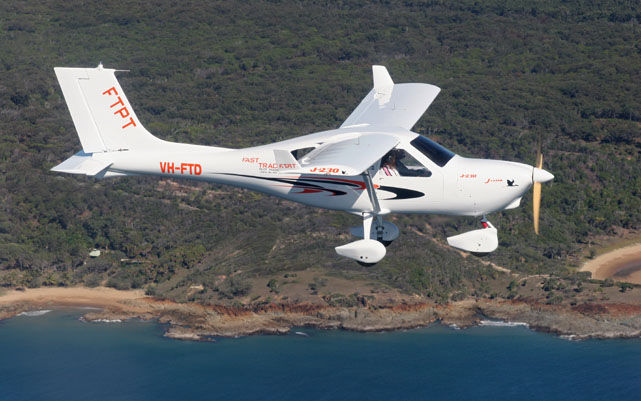Jabiru-powered aircraft will operate without restriction for at least another week after the Civil Aviation Safety Authority (CASA) extended the consultation period for proposed operational limitations on the manufacturer’s engines.
CASA says it is continuing to learn more about the why there have been an increasing number of incidents from aircraft fitted with Jabiru engines.
On November 13, CASA in a consultation draft proposed limiting the use of Jabiru-powered aircraft to daylight hours and away from populated areas. Moreover, Jabiru-powered aircraft would be prohibited from carrying passengers and not allowed to conduct student/trainee solo flights.
The regulator said there have been 40 identified incidents of Jabiru engine problems in 2014, ranging “from full and partial power loss and inflight engine shutdowns to rough running and oil leaks”.
“Fortunately, none of these events resulted in death or injury, although many certainly could have had potentially catastrophic consequences,” CASA said in a statement on Thursday.
“Mechanical problems identified by Jabiru include through bolt, valve, cylinder and fly-wheel bolt failures. CASA is endeavouring to learn more about why these engine-related issues have arisen and to identify the causes and contributing factors. Causes may relate to the design and manufacturing process, operational conditions, engine maintenance or a mix of these factors.”
The consultation period was previously due to conclude on Thursday November 20. However, submissions from interested parties will now be accepted until November 27.
CASA said it was continuing to work co-operatively with Jabiru on the matter.
Bundaberg-based Jabiru makes four-cylinder 2200cc and six-cylinder 3300cc aircraft engines. Figures from CASA indicated about 1,100 aircraft in Australia were fitted with Jabiru engines.
Jabiru representatives met with CASA in Canberra last Friday in what the company said was a “lengthy and fruitful discussion”.
“Jabiru has already put in place a range of reforms and is demonstrating to CASA clear willingness to improve engine reliability,” the company said in a statement on November 14.
Industry group Recreational Aviation Australia (RA-Aus) had said previously it acknowledged the engine failures associated with Jabiru engines and would be working with both the regulator and the company to discuss the impact of the proposed operating limitations on aircraft owners, flight training facilities and maintainers.
“It would appear the proposed actions by CASA are disproportionate to the risks faced by owners and operators,” RA-Aus said in a statement posted on the Recreational Flying website.

















Boggles
says:Maybe they could use motorcycle engines,they are way more reliable,more horsepower,and lighter weight.
David
says:Motorcycle engines would not work. Aircraft engines need to be able to pump out 75% power most of the time, and 100% power for extended periods of time. They often have no liquid cooling, and air cooling is limited during climbing (operating at 100% power with lower airspeed).
The best engines are the ones that are proven such as Rotax, Lycoming, and Continental.
GAGA
says:I don’t think that would be the reason why motorbike engines wouldn’t work (or maybe they would?) . Motorbike engines usually don’t have water cooling either and they most certainly don’t have a propeller blowing cooling air into them. The smaller ones at least, do get run at full power a lot of the time. Postie size bikes/mopeds/scooters or some dirt bikes operated on the road can only do about 70kmh so operate at full power nearly all the time.
Boggles
says:About 50 percent of new bikes are water cooled,when suzuki tested the gsxr 750-1100 they ran it all day flat out and couldn’t kill it.every year they get more and more horsepower out of them.130-200 hp.then you go for a BMW boxer engine ,air -oil cooled ,they do 300-400.000km ,bullet proof.my father has a lycoming 540 in his Comanche, with a 2000 TBO,it something like 30- 40.000 bucks to rebuild it,how to people afford to own GA aircraft has got me,I’ve seen on you tube a cessna 172 with a Chevrolet corvette engine,now that’s different,or a piper arrow with a Mazda rotary car engine,.their must be something available in the future…
Webby
says:My Dad had a Comanche too, for 25 years, and would have loved a cheaper engine option. But the GSXR 750-1100 engines give up their power in the 5000 – 10,000 rpm range or even higher. Aircraft propellors run at 1000 – 2500 rpm. Simply not designed for the same purpose. Alternative engines to Lycoming and Continental have been dreamed about for 50 years and many options tested like the Porche powered Mooney, but none have lasted.
Boleropilot
says:Boggles is right about the BMW boxer engines – in Europe there are a lot of trikes with Rotax 2-stroke motors and they are getting grief from ‘low pollution’ laws
A lot of them have changed over to BMW boxers and they are the bees knees from what I have read
I would dearly love to swap the Rotax 582 on my Drifter for one of these (the kits are available) but I just can’t get the money together for that project
BTW, a new engine under development in NZ (Duke) looks fascinating – have a look
PS you do of course know what the BMW badge represents ???